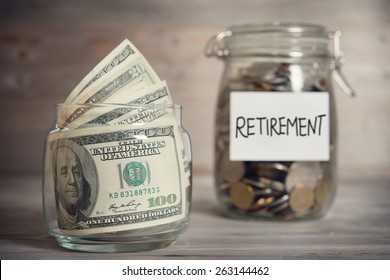In many ways, the financial decisions you make in your twenties are more significant than those you make at any other point in your life. The most crucial decision you can make is to get started right away. Consider two college grads who have access to tax-deferred investment accounts that generate 8% per year. The first investor saves $250 every month for 10 years and then doesn’t invest again for another 30 years. Their portfolio is worth $509,605 at the end of 40 years.
For the first ten years of the same 40-year span, the second investor does not invest. Instead, they will make a monthly payment of $250 for the next 30 years, totaling $90,000. The second investor, however, although accumulating more money over a longer period of time, only ends up with $375,074. This demonstrates that the most powerful combination for wealth development is time and compounding power. Time has the potential to convert tiny habits into spectacular outcomes, whether you’re saving early and frequently, steadily adding to your financial portfolio, or sticking the course in times of uncertainty.
Set Objectives
It’s crucial to know what you want to accomplish with the money you earn before you invest. A reverse budget is a useful tool for identifying goals and devising a strategy to achieve them. Short-term savings should be retained in cash rather than invested in the stock market for goals that are less than five years away. Because market volatility is unavoidable it’s the price of greater projected returns in stocks than bonds or cash accepting the risk of market losses for short-term aims is risky because they have less time to recover.
While cash should be used for short-term purposes, a combination of stocks and bonds is required to increase your wealth for long-term goals such as retirement or paying for a child’s college tuition. If you don’t have enough risky assets, such as equities, in your portfolio, you might not be able to reach your long-term objectives. A portfolio that does not take enough risk will also necessitate an unreliable source of income.
Make the Most of Your Retirement Funds

There are several retirement accounts that allow wages, income, and capital gains to compound tax-free. Start by contributing enough to your employer-sponsored retirement plan to qualify for a match. If your company matches 3% of your contributions and your income is $100,000, you’ll need to contribute at least $3,000 to your retirement plan to receive the entire match. It’s like leaving free money on the table if you don’t make this contribution.
Once you’ve put enough money into your company’s plan to get the match, focus on increasing your contributions to other tax-advantaged accounts in the following order: Roth IRA or deductible conventional IRA, workplace retirement plan, traditional nondeductible IRA, and taxable account.
Finally, while a health savings account (HSA) isn’t typically thought of as a retirement account, it may be a unique method to enhance your retirement savings.
Set Money Aside For A Rainy Day
Regardless of your financial situation, having money set aside for unexpected costs is critical. In fact, putting part of your extra savings into an emergency fund takes precedence over making more debt repayments or investing. An emergency fund should typically hold three to twelve months’ worth of costs. If you’re beginning from scratch with your emergency fund, set aside at least 10% of your monthly savings for it. You can probably develop this account more slowly if you have a good degree of job security and income predictability.
To earn a better interest rate on your emergency fund than you would in your regular checking account, consider storing it in an online account. Keeping your emergency savings separate from your main checking account also lowers the temptation to use that money for non-emergency needs.
Don’t try to outperform the market
Although investing is a complex activity, it does not necessitate a complex answer. The issue is that most investors get in their own way by interfering with their portfolios excessively. While it’s natural to seek investments that outperform the market, most investors who go this path misunderstand the level of competition and the likelihood of success. There is a mountain of evidence indicating both amateur and professional investors underperform the market on a regular basis, but it doesn’t imply you shouldn’t invest. Instead, it merely indicates that using a passive investing plan will help you succeed.
Make It Automatic

As you become older, your finances tend to get more difficult. Putting your savings, payments, and investments on autopilot can help you save time and money. Automating a dollar-cost averaging (DCA) strategy for your investments eliminates the need to choose the optimum time to invest by contributing a fixed amount to your portfolio on a regular basis. For example, on the 15th of each month, you might deposit $1,000 to an investment account for a lengthy period of time.
This allows you to diversify between asset classes as well as overtime. Because you buy fewer shares when prices are high and more shares when prices are low, making equal dollar purchases over time might potentially decrease your average purchase costs. While a lower average purchase price isn’t always guaranteed, DCA is still beneficial from a behavioral standpoint since investing at regular intervals minimizes the danger of buying at the wrong moment and losing money right away. DCA is also the simplest approach to invest on a monthly basis. You don’t have to do anything other than set up monthly automatic donations to your accounts.
Your investing horizon is long while you’re in your twenties. That implies you have plenty of time to make amends if you make a mistake. The greatest significant risk you face in your twenties is not investing at all. Assume you decide to begin investing $1,000 each month and achieve a 7% return on your investment. If you start saving when you’re 25 and keep it up until you’re 65, you’ll have $2.64 million in your retirement account.
How does this compare to starting to invest at the age of 40 rather than 25? If you start investing when you’re 40, you’ll only have $814,000 when you’re 65. To put it another way, starting to invest at the age of 25 rather than 40 resulted in an additional $1.8 million in wealth.
The important thing to remember is that you must begin investing early in your life. When stretched out across decades, portfolio volatility is unimportant. However, the length of time you devote matters.
Index Funds
In your twenties, where should you put your money? It’s tempting to attempt a variety of assets when you’re just getting started with investing. Keeping it simple, rather than flinging spaghetti at the wall, is the best strategy. Start with a stock and bond portfolio before spreading yourself too thin.
Stocks have a greater risk and higher return profile than bonds at a high level. The best way to weigh these asset types in your portfolio has long been a point of contention. However, in your twenties, you should invest more significantly in inequities. Should you invest in bonds when you’re in your twenties? Bonds have a minor percentage in my portfolio, but the answer again depends on your risk tolerance. However, if you have a long time horizon and can bear the risk, investing substantially in inequities should result in more wealth.
Rather than trying to choose individual stocks and bonds to buy in your twenties, invest in index funds. Index funds are a collection of several assets that help you to diversify your portfolio. Rather than choosing winners and losers, purchase the entire market.
Real Estate
You can afford to make bets on a variety of assets while you’re young. When done appropriately, adding alternative assets to your investment portfolio may minimize portfolio volatility and enhance risk-adjusted returns. Real estate is one asset type on which I am betting. I prefer residential homes over all other types of real estate. People will always need somewhere to live, and residential real estate has shown to be a fairly stable asset class, with the exception of a few exceptional exceptions. Check out our ASF guide to buying your first rental property if you’re interested in investing in residential homes. It’s a lot easier than you would think, and it’s a relatively low-risk investment. I’m up to three pieces now, and I’m on the verge of purchasing my fourth. While getting the homes closed and rent-ready has been a challenge, once the renter has moved in, there is very little work to be done.
Primary Residence
You’re probably thinking about purchasing your first home when you’re in your twenties. While there are numerous factors to consider when selecting between renting and purchasing a house if you expect to stay in your current location for more than a few years, owning your primary residence might make a lot of sense. To be honest, I don’t regard main houses to be valuable assets. It is a liability because it takes money out of your pocket instead of putting it in your pocket.
Renting, on the other hand, is frequently worse than purchasing a home. In fact, whether you live in a rental or buy a home, your primary house will cost you money. As a result, when it comes to your primary house, your objective should be to spend as little money as possible.
Education

Your twenties are an excellent time to start investing in your education. This might entail earning an advanced degree to supplement your income or simply investing in a few courses to acquire new talent. One of your most valuable possessions might be your education. Why? Because it can pave the way for your professional achievement.
However, not all educations are beneficial. If you go to school for an art or history degree, it’s unlikely that you’ll be able to increase your salary in the future. Now, if you’re aware of this and still want to spend the money, that’s fantastic. Recognize, however, that some education expenditure is a pastime rather than an investment.
There is no better time to focus on financial literacy than in your twenties, in addition to investing directly in education. Even if it only means buying a few books, knowing as much about personal finance as you can in your twenties can put you up for financial success for the rest of your life.
Cash Flow
If you’ve been out of school for a few years, you may be debating whether you should pay off loans or start investing. The mathematical answer is that if the interest rate on your loans is less than the interest rate you might make by investing, you should invest instead. For example, if you have student loan debt with a 4% interest rate and feel you can get a 7% return on your investments, you’d be better off investing rather than making minimum payments on your loans.
In general, I would advise you to prioritize investing over paying off debts with interest rates of less than 6%. You should, however, be earning at least the minimum wage. Using your wages to free up cash flow in your twenties can help you increase your finances over time, giving you additional possibilities to invest in assets.